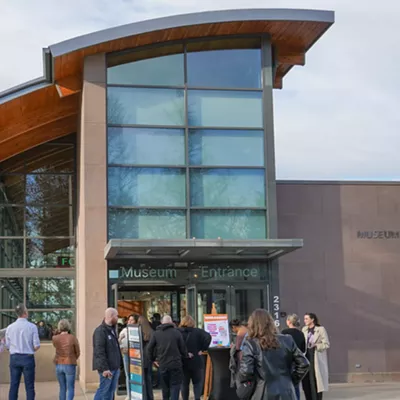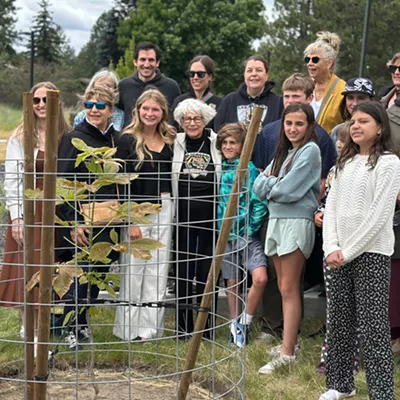Public parks are a staple of life in Spokane. Now with the approval of the public and the city council, tiny parks, called parklets, could become the newest additions to the city's vast collection.
The city has been testing the waters with parklets for two summers, allowing a few to be built and gauging public reaction. Councilmember Lori Kinnear, who has supported the pilot program since the beginning, has drafted an ordinance to put parklet regulations into law and establish a parklet design application.
Kinnear says she hopes to pass that ordinance into law by September or October, so anyone can apply to build their own next summer.
Located just outside of or across the sidewalk from a business, parklets are a bit like big patios for the public to enjoy. They can occupy space next to a business or about two parallel parking spots directly in front of one, which is more likely downtown. They have shade, tables, places to sit and plants around the top of the short wall that separates them from the street. They differ in features and appearances to match the surrounding areas and businesses, says designer Jose Barajas.
Barajas, an architect at local firm Integrus Architecture, is president and one of the founders of the nonprofit YES (You Express Studio), which builds the parklets.
Barajas says that YES has taken on a few other projects, including community murals, but the tiny parks were one of their first and biggest projects.
He says he first saw parklets in San Francisco and Seattle, but wanted to improve on the mobility and construction time. "We take more time to design them and make them modular," he says.
Rather than constructing the entire thing on-site, which Barajas says can take more than a month, the builders at YES make interlocking pieces to the parklet and simply assemble it.
"Kind of like LEGOs," Barajas says.
This also provides the ability to merely replace a piece if it is damaged or vandalized, rather than having to work on the entire unit.
YES designs its parklets to be made with more than half repurposed materials, like wood and steel, which they salvage year-round.
Barajas says one of the hardest parts of the design process is making the parts work together coherently in such a small space.
"How do you make a planter that's also a bench and also sculptural and also a guardrail and also waters itself?" he says.
Despite this challenge, Barajas has even more ambitious ideas for a pop-up mini-shop where a vendor could sell magazines or ice cream, though that's not much more than an idea at this point.
Ryan Hare and Jacob McLean sat at Vessel Coffee Roasters' parklet, drinking coffee on a sunny Tuesday morning. Both had seen them before, but neither had sat in one. Hare and McLean agreed it was a comfortable place to spend time outside and would want to come back to one.
"[At first] I wasn't sure what it was, but it looked cool," Hare says. "It's nice. It's very welcoming. All the plants are nice. It's not just a boring patio." ♦

















